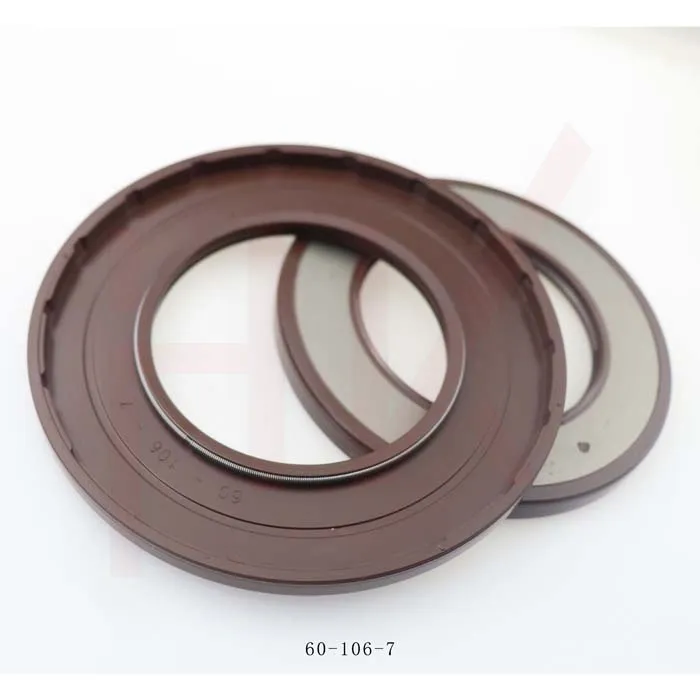ਨਵੰ. . 24, 2024 10:52 Back to list
forklift hydraulic cylinder seals
Understanding Forklift Hydraulic Cylinder Seals
Forklifts play a vital role in warehouses, construction sites, and many other industries where heavy lifting is essential. At the heart of a forklift's lifting mechanism is the hydraulic system, which relies on hydraulic cylinders to generate the force necessary to lift and lower heavy loads. Central to the efficiency and longevity of these hydraulic cylinders are the seals that prevent fluid leaks and ensure smooth operation. This article explores the importance of hydraulic cylinder seals, the common types used in forklifts, and best practices for maintenance.
Importance of Hydraulic Cylinder Seals
Hydraulic cylinders function by utilizing pressurized fluid to create movement. They consist of a piston that moves within a cylinder, and the seals are critical for maintaining pressure and preventing leaks. A well-functioning seal can enhance the efficiency of the hydraulic system, increase energy savings, and prolong the life of the equipment. Conversely, worn or damaged seals can lead to fluid leaks, reduced lifting capacity, and increased wear on the hydraulic system, resulting in costly repairs and equipment downtime.
Common Types of Hydraulic Cylinder Seals
The most commonly used seals in forklift hydraulic cylinders include
1. Rod Seals These seals prevent hydraulic fluid from leaking past the rod (the moving part of the cylinder). Rod seals must withstand high pressure and various environmental conditions, making durability a key consideration.
2. Piston Seals These are located at the piston end of the cylinder. They ensure that the hydraulic fluid is contained within the cylinder and provides the necessary force to lift loads. Piston seals come in several designs, including O-rings, U-cups, and V-packings, each providing unique benefits.
3. Buffer Seals Also known as backup seals, they are employed to protect the rod seals from pressure spikes and contaminants. They act as a secondary line of defense, absorbing shock and providing additional support to the primary seals.
forklift hydraulic cylinder seals

4. Wiper Seals Located at the exterior side of the cylinder, wiper seals help keep contaminants such as dirt and debris from entering the hydraulic cylinder. They are crucial for maintaining the integrity of the inner seals and the hydraulic fluid.
Maintenance of Hydraulic Cylinder Seals
Proper maintenance of hydraulic cylinder seals is essential for the reliable operation of forklifts. Here are some best practices
1. Regular Inspections Routine checks can help identify signs of leakage early. Look for any fluid accumulation around the cylinder or unusual wear on the seals.
2. Contaminant Control Keeping the work area clean and ensuring that equipment is free from dust and debris can help prolong the life of the seals. Implementing wiper seals effectively can also prevent contaminants from causing damage.
3. Fluid Quality Using high-quality hydraulic fluid that meets the manufacturer's specifications can help prevent seal degradation. Regular fluid replacement can also mitigate issues related to worn seals.
4. Professional Servicing Engaging trained technicians for maintenance and repairs can ensure that seals are replaced and installed properly. Professionals can provide insights into the best seal materials based on operational conditions.
Conclusion
Understanding the role of hydraulic cylinder seals is crucial for anyone involved in operating or maintaining forklifts. These small components play a significant role in the efficiency and reliability of hydraulic systems. By implementing a proactive maintenance approach and ensuring the use of high-quality seals, operators can minimize downtime, enhance performance, and extend the lifespan of their equipment. As industries evolve and demands increase, investing in the proper care of hydraulic systems becomes ever more critical for maintaining competitive advantage.
-
Unlocking the Potential of Hydraulic Systems with Essential Sealing Solutions
NewsAug.06,2025
-
Unleash the Power of Your Hydraulic Systems with Our Premium Seal Kits
NewsAug.06,2025
-
Specialized Hydraulic Seal Kits for Breakers, Pistons, and Presses
NewsAug.06,2025
-
Revitalize Hydraulic Systems with Premium Repair and Seal Kits
NewsAug.06,2025
-
Fortify Your Cylinders with Premium Sealing Solutions
NewsAug.06,2025
-
Elevate Hydraulic System Reliability with Specialized Seal Kits
NewsAug.06,2025
-
TCN Oil Seal Metal Ring Reinforcement for Heavy Machinery
NewsJul.25,2025
Products categories
















